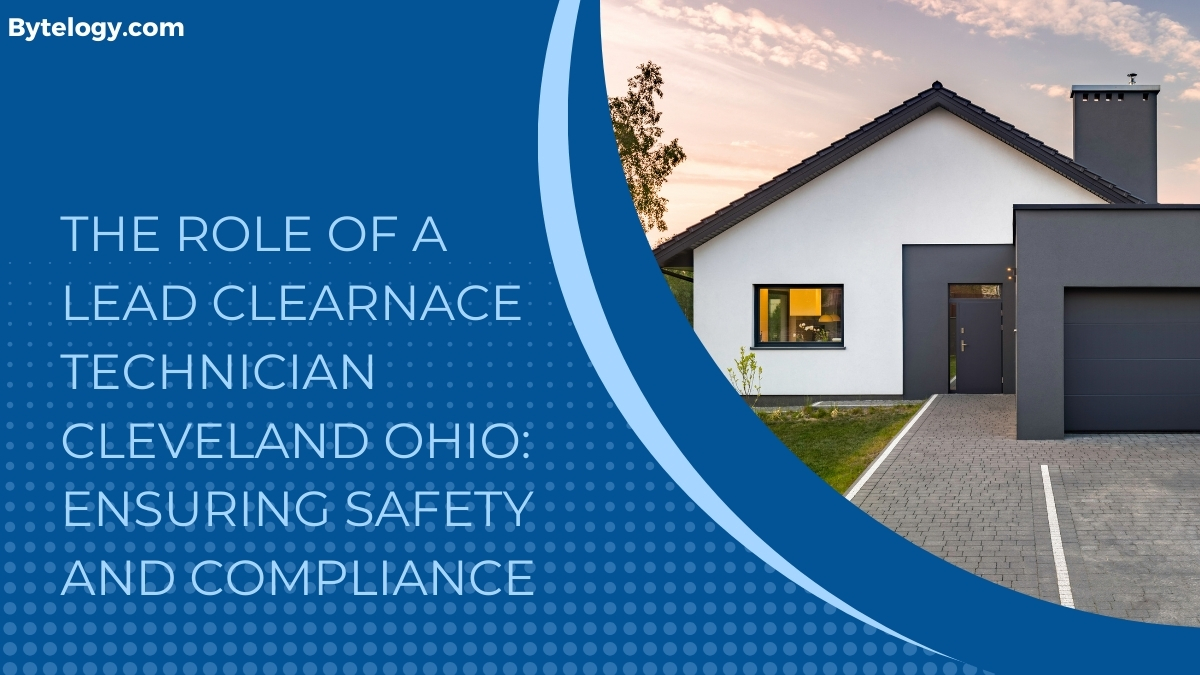Lead contamination remains a serious concern in many older homes and buildings, particularly in cities with a rich industrial past like Cleveland Ohio. Exposure to lead can have devastating health effects, particularly for children and pregnant women. To ensure homes and workplaces are safe from lead hazards, the role of a lead clearnace technician Cleveland Ohio is crucial. These professionals conduct post-abatement inspections to verify that lead removal efforts have been successful and meet safety standards.
What is a Lead Clearnace Technician?
A lead clearnace technician is a certified professional responsible for evaluating properties after lead abatement procedures. Their primary goal is to ensure that lead dust, paint and other lead-based contaminants have been effectively removed or reduced to safe levels. This process involves:
- Conducting visual inspections to assess cleanliness.
- Collecting and analyzing dust wipe samples.
- Using specialized equipment to test for lead presence.
- Ensuring compliance with federal, state and local regulations.
In Cleveland Ohio, strict guidelines set by the Environmental Protection Agency (EPA) and the Ohio Department of Health (ODH) regulate lead clearnace procedures, making these technicians vital for public health and safety.
Importance of Lead Clearnace in Cleveland Ohio
Cleveland has a significant number of homes built before 1978, a period when lead-based paints were commonly used. Many properties still contain lead hazards, which can pose severe risks if not properly managed. The role of a lead clearnace technician Cleveland Ohio is essential for several reasons:
- Protecting Public Health – Lead poisoning can cause cognitive and developmental issues, particularly in children. Clearance technicians help prevent exposure by ensuring proper lead removal.
- Regulatory Compliance – Property owners and contractors must adhere to EPA and ODH regulations. Clearance technicians provide the necessary certification for compliance.
- Safe Real Estate Transactions – Homebuyers and renters need assurance that a property is lead-safe before making a commitment. Clearance certification facilitates trust and transparency.
- Workplace Safety – Employers must comply with OSHA standards to ensure lead-free work environments, making clearance inspections crucial for businesses in older buildings.
The Process of Lead Clearnace Inspection
A lead clearnace inspection typically follows a structured process to ensure thorough and accurate assessment:
1. Pre-Inspection Review
Before conducting the clearance test, the technician reviews documentation related to the lead abatement work performed. This includes:
- Abatement reports
- Contractor details
- Prior inspection results
2. Visual Inspection
The technician examines all surfaces to check for remaining lead dust, debris or deteriorating paint. Any visible contamination requires re-cleaning before further testing.
3. Dust Wipe Sampling
Using specialized equipment, the technician collects dust samples from high-risk areas such as floors, window sills and door frames. These samples are then sent to a certified laboratory for analysis.
4. Lab Testing and Reporting
Once the lab results confirm that lead levels are within permissible limits, the technician issues a clearance certificate. If levels exceed safety thresholds, additional cleaning and re-testing are required.
Becoming a Lead Clearnace Technician Cleveland Ohio
To work as a lead clearnace technician Cleveland Ohio, individuals must complete state-approved training and certification programs. The requirements typically include:
- Completion of an accredited lead clearnace training course.
- Passing an exam covering lead regulations, safety practices and testing methods.
- Obtaining certification from the Ohio Department of Health.
- Regular renewal of certification through continued education.
Certified technicians play a crucial role in maintaining lead safety standards, making this profession both rewarding and impactful for community health.
Frequently Asked Questions (FAQs)
1. What is the purpose of lead clearnace testing?
Lead clearnace testing ensures that a property is free from hazardous lead contamination after abatement or renovation. It helps protect residents and workers from lead exposure.
2. Who needs lead clearnace testing in Cleveland Ohio?
Homeowners, landlords, contractors and businesses operating in older buildings must comply with lead safety regulations. Any property undergoing lead abatement requires clearance testing.
3. How long does a lead clearnace inspection take?
The inspection process typically takes a few hours, depending on the size of the property and the number of samples collected. Lab testing for dust samples may take additional time.
4. What happens if a property fails the lead clearnace test?
If a property fails, the owner must undertake further cleaning or abatement measures. A follow-up inspection is then required to verify compliance.
5. How can I find a certified lead clearnace technician Cleveland Ohio?
You can find certified technicians through the Ohio Department of Health’s official website or by contacting local environmental and lead safety agencies.
Conclusion
A lead clearnace technician Cleveland Ohio plays a vital role in ensuring homes and workplaces are free from hazardous lead contamination. With the city’s older housing stock and strict regulatory requirements, these professionals help safeguard public health, support legal compliance and contribute to safer living environments. If you own a property in Cleveland, ensuring lead clearnace certification is an essential step toward maintaining a safe and healthy space for everyone.

